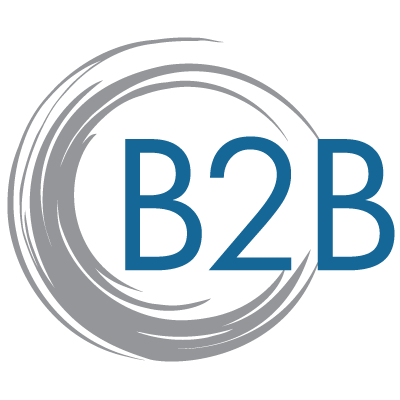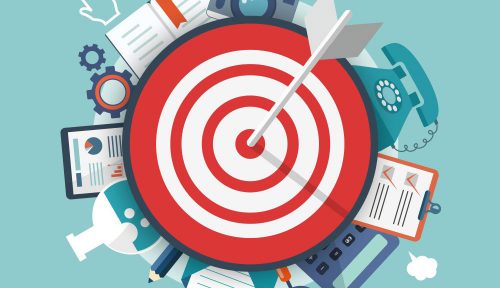Top 10 Sales Strategies for New Product Launches Sales Outsourcing Best Practices
 There is no grey area for Gabriel Sales that sales outsourcing for new product launches is ultimately about closing business. However as a sales consulting firm that has driven millions in closed deals and over 200M in exits with successful new product and service launches over the past 10 years we also understand that we can drive wealth for the entrepreneurs, executives and investors that we serve by empowering the entire organization. This is done with the right feedback loops and insights so our clients can make the right strategic decisions for their business. Below are ten business intelligence and strategic areas that the right sales outsourcing partner for new product launches can and should execute against as sales consultants drive the entire enterprise. For additional resource for new products launches and go to market strategies please visit our Sales Strategies for New Products Launches Resource Page.
There is no grey area for Gabriel Sales that sales outsourcing for new product launches is ultimately about closing business. However as a sales consulting firm that has driven millions in closed deals and over 200M in exits with successful new product and service launches over the past 10 years we also understand that we can drive wealth for the entrepreneurs, executives and investors that we serve by empowering the entire organization. This is done with the right feedback loops and insights so our clients can make the right strategic decisions for their business. Below are ten business intelligence and strategic areas that the right sales outsourcing partner for new product launches can and should execute against as sales consultants drive the entire enterprise. For additional resource for new products launches and go to market strategies please visit our Sales Strategies for New Products Launches Resource Page.
Sales Strategies for New Products
Rapid Communication – It’s critical that direct feedback loops are created from the sales team directly back to product development, the marketing team, and the CFO. These feedback loops need to be available all the time. Speed directly from the market back to the team is critical. One of the advantages of a sales outsourcing firm that specializes is new product launches is that we have designed our internal systems to provide these feedback loops and are contractually accountable for them. The right internal feedback loops will improve the product and align sales and marketing for shared success.
Commit to Digital Content…especially Blogging – We are a sales outsourcing firm making 1000s of outbound calls a day. Customers are not waiting for us to call. If we get them on the phone being able to share a quick piece of content (video, landing page, short demo) goes a long way to getting them to spend more time with us on call two and the same content can also be leveraged to disqualify prospects. The average customer leveraged 10.7 pieces of content in their buying decision in 2011 and this is projected to increase in 2012. If you have a limited budget we have strategies and tactics we leverage for our customers that allow them to take advantage of our sales outsourcing for new product launch tactics that turn your blog into a virtual sales rep.
Be Prepared to Educate the Market – Most new products are offering a new solution that is disruptive to the market. Many new product companies are enamored with their technology (since they have passionately developed it) and forget that in many cases before you get to share those technical specs you need to help the customer understand and define the business problem they are trying to solve. You also need to be prepared to educate your customer how to calculate return. Don’t underestimate the value of keeping it simple for the prospect especially in the early stages of the sales cycle. For more info on how to frame your content strategy, please check out our B2B content framework graphic in our blog What is Successful Sales Collateral?
Sell from Scripts – This is one of several areas where a new product launch sales outsourcing firm has some strategic value over hiring individual internal reps or rolodex reps. Sales outsourcing firms are designed to sell using a repeatable process so selling from scripts is critical. It gives us something to measure and a way to anchor the success of the sale in the message and the story as opposed to the personality.
Commit Focused Energy to your Initial Ideal Customer Profile – If you don’t know what this is we have a short blog series dedicated to this. CLICK HERE TO READ MORE. You need to take your best guess at what verticals and what decision makers will buy and champion your product. And then test those assumptions and measure those results.
Document the Buying Process and the Sales Process – As you take your first customers from MQL or Cold Call through Sales Accepted to Sales Qualified to Closed deal you need to understand the key events in that cycle. As a sales outsourcing firm, this is one of the sales consulting functions we offer our clients. We believe it’s critical because when combined with the right sales metrics (see below), mapped to the Ideal Customer Profile (see above) it gives us the ability to start to more accurately forecast dollars in and dollars out investments for the entrepreneurs and boards we serve. It’s also critical to remember that the same digital content we discussed in point 2 at the top of this blog is contributing to the sale. You need to get your sales reps and marketing team to score that as part of the buying process as well. Documenting the buying process allows you to build a sales process that allows the buyer to buy on their terms which means a sales ramp that consistently moves up an to the right and we are all in this entrepreneurial business to build sales machines that turn growth rates into hockey sticks.
Measure the Right Success Metrics – You need to measure the success of your early pipe efforts from day one. A sales outsourcing solution for new product launches has the advantage of having years (at least 10 years in our case) of historical data to benchmark your efforts against similar sales to similar markets and similar decision makers. This is especially critical for new product launches that have no historical data to benchmark against. To learn more about the metrics Gabriel Sales feels are most critical feel free to reach out to us to Learn if you can Build a High Velocity Sales Machine.
Know Why You Win and Why You Lose – If you are measuring the right data you will already be well on the way to knowing why your new product launch is successful. It’s also important to understand why you are not winning when you lose. One value-add we provide as a sales outsourcing consulting service for new product launches is that after losing a deal we will call the decision maker if possible and ask “ for own learning, is there anything we could’ve done better?” We will take notes and pass that information on to our clients.
Commit to Marketing Automation and Nurturing Prospects “Not Yet Ready to Buy” – Our clients are investing in more than closed deals when they are choosing to outsource part or all of their sales and marketing operations. We are not going to win every deal the first shot we take especially for new products. Some may not have budget immediately, others may be waiting for our clients to have a couple more customers, others may need to champion into their organization. Data from Forrester states that 70% of Marketing Qualified Leads will buy in a solution area they invest time in exploring within 18 months. If nurtured correctly 25% of your MQLs will hit your pipe within a year according to Aberdeen. If you put 400 MQLs into the pipe in your pipe during your initial launch this means (assuming your product hits the mark) that you will have 100 SALs by year if you invest in nurturing out of the gate. Gabriel Sales provides sales consulting to assist with multiple nurturing from lead scoring, to social media outreach, content testing and marketing automation software implementation.
Lead with Value Proposition but Sell with Differentiators – Selling starts when a customer says “No” and arguments are never made in a vacuum. Value propositions are a great lead but they only take you so far. To close a deal your business case needs to make sense in the context of a category. We take all of our new product launch sales outsourcing clients through a quick and proprietary process that helps us and them to tell that story. This does not mean that you need to sell directly against the competition it simply means that the story will include what the prospect/marketplace has heard from the competition. In many cases we find that that competition is an internal competitor.
To see if our Sales Consulting and/or Sales and Marketing Outsourcing Solution is right for taking your new product to market we invite you to visit our New Product Launch Sales Strategies Resource Page. CLICK HERE
For a custom Go-To-Market Evaluation please feel free to CONTACT US to benchmark the market and see if a High Velocity Sales Machine is a possibility for you.

 The world of professional services sales is changing rapidly. Changing with it are the challenges faced by the members of your team. This blog will talk about several challenges and the opportunity they present in selling professional services to clients in today’s environment.
The world of professional services sales is changing rapidly. Changing with it are the challenges faced by the members of your team. This blog will talk about several challenges and the opportunity they present in selling professional services to clients in today’s environment.

 Every call is important for B2B sales.
Every call is important for B2B sales. This is part one of a two part series that explains how being strategic in planning how you target customers will produce significantly better results on the back end. Part two can be found here,
This is part one of a two part series that explains how being strategic in planning how you target customers will produce significantly better results on the back end. Part two can be found here,  It is imperative that your marketing team be data-driven. It’s also imperative your sales funnel effectiveness is turning into sales. Budget dollars are tight and need to be accurately spent. Having clear data on how each of your marketing campaigns are performing is essential to being able to forecast sales, scale your campaigns/operations and re-allocate budget from low performing to high performing campaigns.
It is imperative that your marketing team be data-driven. It’s also imperative your sales funnel effectiveness is turning into sales. Budget dollars are tight and need to be accurately spent. Having clear data on how each of your marketing campaigns are performing is essential to being able to forecast sales, scale your campaigns/operations and re-allocate budget from low performing to high performing campaigns. In
In 